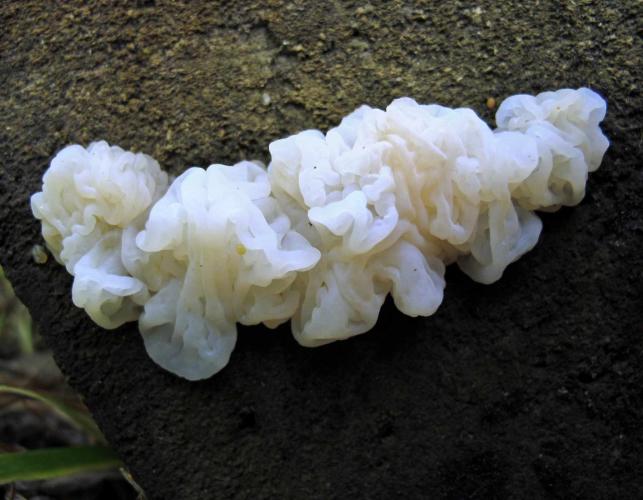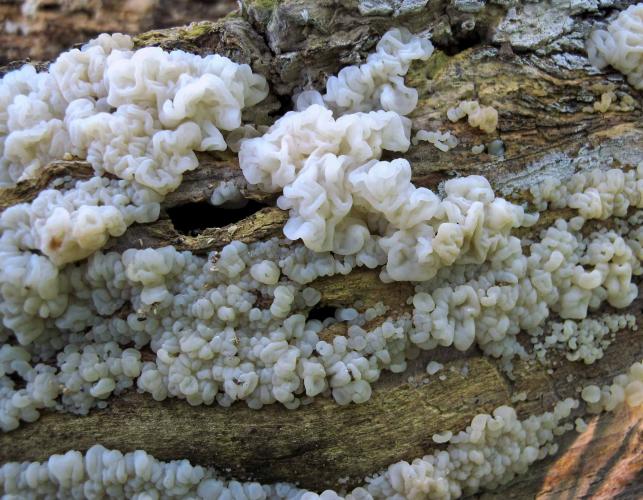
Small, white, gelatinous mass with an irregular shape; brainlike or jelly-like. Grows in clusters on dead wood. Spring and fall. Fruiting body irregular; may look like a blob of jelly or a blister, or may appear cuplike or brainlike; fruiting bodies may fuse and form rows; white; texture gelatinous, smooth. Spore print white. Spores magnified are sausage-shaped, smooth.
Lookalikes: There are other species of “jellies” in the genus Exidia, but they have different colors, which can be black, reddish brown, or amber. Witches’ butter (Tremella mesenterica) is yellow.
Fruiting body width: ⅜ inch to ¾ inch.

Statewide.
Habitat and Conservation
Grows in clusters on dead wood of deciduous trees. Of the many fungus species that digest and break down dead trees, this one seems to specialize in logs that are already very rotted. It is typically found on fallen logs whose bark has completely fallen off.
Status
Not edible. This species was named for Pululahua, Ecuador, where the species was first documented.
Life Cycle
This species exists as a network of fungal cells (mycelium) within decaying wood. The mycelium obtains nourishment by digesting, and rotting, the wood. When ready to reproduce, the mycelium develops the jelly-like reproductive structure outside the wood. Spores are produced on the surface of the jelly and are released to begin new mycelia elsewhere.
Human Connections
Mushrooms decorate nature like wildflowers, adding to our pleasure on hikes. Fungi can be strikingly beautiful—other times, they are downright strange! Discovering fungi can bring out our innate capacity for awe and wonder.
Ecosystem Connections
Fungi are vitally important for a healthy ecosystem. This fungus feeds on decaying trees, decomposing them. This cleans the forest and helps nutrients to cycle back into the soil.




Mushrooms are a lot like plants, but they lack chlorophyll and have to take nutrients from other materials. Mushrooms are neither plants nor animals. They are in a different kingdom — the fungi. Fungi include the familiar mushroom-forming species, plus the yeasts, molds, smuts, and rusts.
Always be cautious when eating edible mushrooms. Be absolutely sure of the ID, and only eat a small amount the first time you try it to avoid a reaction..





















